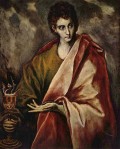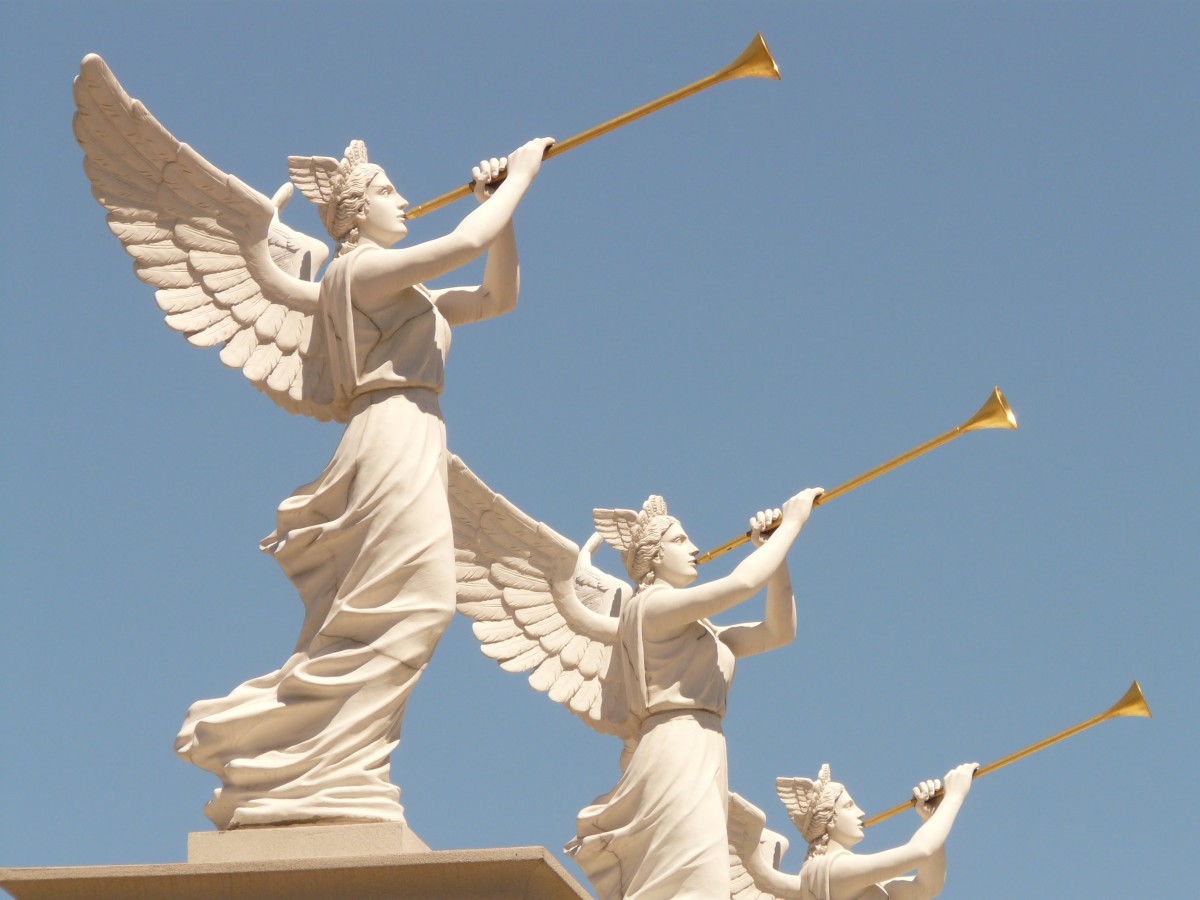Famous Last Words - 3 Lessons from the Johanine Passion Narrative

They That Have Ears Let Them Hear
Chronologically, The Gospel of John comprises the last inspired teachings of Jesus in Orthodox Judeo-Christian tradition. For this reason, it encapsulates instructions for a post temple, "diaspora" Christian community now at odds with its Jewish legacy and Roman authorities.For this reason, the theological and religious lessons provided by John's extended Passion narrative represent the most valuable to the survival of contemporary Christian communities. Below are just a few of the myriad ideas fostered in this well known messianic record.
Jesus Anointed at Bethany (John 12.1 - 11)
After completion of Lazarus’ resurrection, the Gospel of John records three successive episodes confirming Christ’s status as a divine sovereign of the Kingdom of Israel. That the prevailing Jewish leaders of the era reject the miracle proves incongruous for several reasons; according to rabbinical tradition, the only miraculous feat which cannot be counterfeited is the raising of the dead; the Sanhedrin condemn Jesus of Nazareth for political rather than religious reasons; through disbelief , the Sanhedrin ultimately contribute to the fulfillment of Christ’s suffering for the redemption of his people. Jesus chooses to spend the remaining days leading to the Passover at Bethany, tended by the sisters Mary and Martha. Mary of Magdala especially serves as a catalyst for demonstrating Christ’s divine wisdom and authority by pouring perfume on Jesus’ head. The scene serves as entendre since precious scents were distributed for two, prevalent reasons; the preparation of the dead for burial (signifying Jesus’ imminent crucifixion); the ritual anointing of rulers (confirming Christ’s status as the Jewish Messiah).
Jesus Comes to Jerusalem as King (John 12.12 - 19)
With the exception of Easter, no other liturgical holiday has been celebrated with greater aplomb or heterodox festivities than Palm Sunday, the date inciting the Passover week commemorating the Crucifixion and resurrection of Christ. One of the earliest celebrations on the liturgical calendar, its relationship to the raising of Lazarus has been recorded among the earliest extant hymns of Easter Orthodox worship:
O Christ our God/ When Thou didst raise Lazarus from the dead before Thy Passion/ Thou didst confirm the resurrection of the universe/ Wherefore, we like children/ carry the banner of triumph and victory/ and we cry to Thee, O Conqueror of love/ Hosanna in the highest/ Blessed is He that cometh/ in the Name of the Lord.
The Saturday preceding the event (often informally dubbed “Lazarus Saturday”) is often spent collecting or manufacturing the palm fronds as described in the Johanine Gospel. Similar to the laurels worn by Olympic victors or triumphal military heroes in the Hellenic era, palms were a careworn sign of aristocratic or meritocratic status during the first century C.E. Many catechisms take the holiday further, including the recreation of Christ’s entry on a donkey and the burning of “Jack O’Lents” in effigy of Judas Iscariot. The common denominator among these diverse traditions is the recognition of Jesus of Nazareth’s status as the “king of kings.” It is no accident that the Johanine episode upon which such traditions are based stayed the sundry conspiracies against Christ. A provincial, unschooled rabbi affecting airs of such grandeur would have doubtless been perceived as an act of rebellion by Roman authorities and the era’s prevailing Jewish leaders.
The Passion of St. John (J.S. Bach)
The Vine and the Branches (John 15.1 - 17)
It is no surprise that in an extended Passion narrative, the Johanine gospel gives special emphasis to the last day of Jesus’ life. Starting with the Gethsemane episode, The Gospel of John carefully relates the final, earthly thoughts of Christ for the benefit of pastoral Christians. One of the most immediate concerns for believers that had first suffered persecution under Roman Imperialism and Jewish prejudice was the question of the Second coming. When Christ promised to “return” to his followers, many saints pondered the exact timeline of the parousia or advent of God’s kingdom. Several contenders for the return of Emmanuel to earth emerged within the minds of first century believers:
- “Last Hour”—The apostle John himself remarks that the appearance of false messiahs and Antichrists heralds the imminent return of Christ to his faithful followers. Numerous biblical scholars have noted that a large number of early Christians may have misinterpreted this dictum to mean that Jesus would return within a single generation of his death and resurrection.
- Preterism—Another popular belief among early Christians was the conviction that Christ’s return would be initiated through seismic cultural events; among the most prominent the destruction of the Herodian temple in Jerusalem. As this event had preceded the recording of the Johanine Gospel, many Christians baited their breath for other signs of Christ’s advent.
- Eschaton—The interpretation of the Johanine Gospel proposes a third, unknown date for Christ’s re-appearance on the world stage; that the day of said return would be deliberately obfuscated from believers in order to insure a rich, spiritual harvest of the paraclete’s pastoral fruits.
The final, pastoral understanding of Christ’s advent would have proven a difficult teaching for most Christians to accept in an age of severe persecution. For this reason, John continuously assures his readers of the Spirit’s presence in their lives.
Though metaphors of vines and branches abound in Old Testament prophesy, it would be remiss to presume Jesus of Nazareth’s references to the cultivation of grape harvests in John’s Gospel did not connote special meaning to denizens of the first century. Viticulture underwent tremendous evolutions during the Hellenic era, becoming one of the staple commodities of the Roman Empire. Indeed, wine harvesting became the exemplar symbol of civilization for Etruscan, Greek and later Roman cultures. As Alcaeus, the Greek poet proclaims, “Plant no tree sooner than the vine.” Compounded with earlier teachings regarding vine imagery, a delicate but potent metaphor emerges in the Johanine Gospel; that Christ wishes to conquer the world through pastoral, spiritual means rather than imperial oppression.
The Old Testament consistently uses vine metaphors as way of chastising Israel for its spiritual unfaithfulness to its God. Here, Christ extols his followers with the promise that the Holy Spirit or “advocate” serves as a living connection or vine between God and his people. In a Gospel bereft of parables, Jesus of Nazareth’s interpretation of vines and branches proves toe most redolent and evocative allegory in Johanine narrative. The image would have proven especially vivid for early Christians that had been forcibly removed from their homes and encouraged to begin lives anew in areas of the Roman Empire hostile to Christ’s teachings.
The Trial of Jesus of Nazareth (John 18.28 - 40)
Having alluded Jewish authorities on several prior occasions, Jesus’ persecutors now ally themselves with their most reviled enemy, the Roman magistrate, to condemn Christ. According to Roman law, assembly after nightfall was forbidden for fear of riotous actions and dissenting speech. With this in mind, the Jews seek to capture Jesus challenging the religious authority of Caesar as a living god. Rather than reveal his divine identity, Jesus only admits to his role as a Jewish king, rendering him beyond the reach of Roman recrimination. This places Jesus’ persecutors in a tenuous position; they cannot wholly rely on Rome’s judgment to condemn Christ; they risk raising the ire of Jesus’ numerous followers by their own judgment. Rather than exclusively seek Roman prosecution, the Jews bring Jesus before the Sanhedrin. When this tract fails, the Jews search for an unlikely ally in the guise of Pontius Pilate. It is essential to the Johanine Gospel not to prove Jesus is blameless from inciting tensions between himself and the Jewish authorities. Pains have already been taken from the inspired author to discredit the religious authority of the Pharisees and Sanhedrin. Instead, the Gospel of John focuses on the task of rendering Jesus above the reproach of Roman law based on the following edicts:
- As the rightful heir to the Davidic throne, Jesus’ claim as Jewish sovereign pre-dates the annexation of Palestine under Roman authority, rendering his title, King of Jews” beyond the condemnation of Pilate.
- Having previously spoken on the authority of Caesar earthly domain, Jesus could not be convicted of political treason. His revolution sought an inclusive, spiritual kingdom that transcended imperial boundaries.
- Jesus willingly testifies on his own behalf, preventing his detractors from spurious accusations.
The above apologia would likely have proven encouraging for Christians that had undergone persecution under both Roman and Jewish power.
Renowned for his vindictiveness and cruelty by both Roman and Jewish historians, Pontius Pilate remains one of the most vilified Roman governors according to available in extant records. Specifically, Pilate’s tensions with the Jews catalyzed several riots surrounding the time of Christ. Recalled and later chastised by the Emperor for unreasonable agitation of the Jews, Pilate’s reputation would have been known to early Jewish Christians, regardless their prior experiences with Gospel records of Christ’s ministry.:
When Pilate, who was a man of inflexible, stubborn and cruel disposition, obstinately refused, they shouted: 'Do not cause a revolt! Do not cause a war! Do not break the peace! Disrespect done to our ancient laws brings no honor to the emperor. Do not make Tiberius an excuse for insulting our nation. He does not want any of our traditions done away with. If you say that he does, show us some decree or letter or something of the sort, so that we may cease troubling you and appeal to our master by means of an embassy./ This last remark exasperated Pilate most of all, for he was afraid that if they really sent an embassy, they would bring accusations against the rest of his administration as well, specifying in detail his venality, his violence, his thefts, his assaults, his abusive behavior, his frequent executions of untried prisoners, and his endless savage ferocity. (Philo)
Hence, Pilate’s incapacity to convict Jesus of Nazareth under Roman law or custom would have proven especially prescient to persecuted Christians. If a historical figure like Pilate was unable to find fault in Jesus’ actions, accusations of heresy from Jewish authorities would have proven equally reputable from Jesus’ followers.
What is Truth?
Know any other online resources for studying the Gospel of John? I look forward to your comments and thank you in advance for any kind words. Check out my other Hub Pages for additional suggestions for navigating college assignments by working smart instead of merely working hard.







